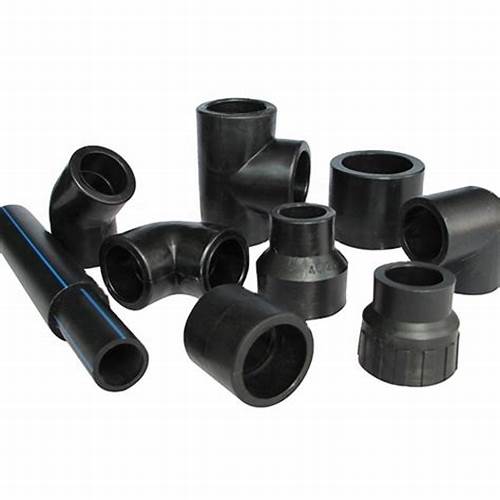Understanding the Importance of Insulating Flanges in Electrical Systems and Applications
Understanding Insulating Flanges Importance and Applications
Insulating flanges are critical components utilized in piping systems across various industries, including oil and gas, chemical processing, water treatment, and power generation. They serve a dual purpose providing electrical insulation between two sections of pipe and preventing the flow of fluids from one section to another when required. This article delves into the significance, construction, applications, and benefits of insulating flanges.
What are Insulating Flanges?
An insulating flange is a specialized flange designed to create an electrical barrier between two flanged joints. Essentially, it consists of non-conductive materials that prevent the transfer of electrical currents, ensuring that any stray or induced currents do not travel through the piping system. This is crucial in applications where electrical isolation is necessary for protection against corrosion, to avoid interference with sensitive electronics, or to comply with safety regulations.
How are Insulating Flanges Constructed?
Typically, insulating flanges are manufactured using standard materials such as carbon steel or stainless steel, but they include a non-conductive insulating layer between the flanges. This insulating layer can be made from materials like phenolic resin, rubber, or other dielectric substances that can withstand the operating conditions, including temperature and pressure.
The construction of an insulating flange often involves the following components
1. Flange Plates These are the outer sections that connect to piping. 2. Insulating Gasket Positioned between the flange faces, this gasket maintains the electrical insulation while ensuring a leak-proof seal. 3. Insulating Washers and Sleeves These components further enhance the insulation by ensuring that the bolts used to fasten the flanges do not inadvertently create a conductive path.
Applications of Insulating Flanges
1. Corrosion Management In many industrial applications, metal pipes are susceptible to corrosion due to electrochemical reactions. Insulating flanges can effectively isolate sections of piping, thereby minimizing corrosion caused by stray currents. This is particularly relevant in cathodic protection systems, where isolating specific sections of piping aids in managing and controlling corrosion rates.
insulating flange

2. Electrical Isolation In sensitive applications, such as those involving electronic measurement devices or control systems, insulating flanges prevent electrical noise or transients from affecting the operation of these systems. For instance, in wastewater treatment plants or chemical processing units, insulating flanges help maintain the integrity of electronic sensors and equipment.
3. Safety Compliance Many industries are governed by strict safety regulations. Insulating flanges can contribute to compliance by providing necessary electrical isolation, reducing the risk of sparks or electrical faults that could lead to fire hazards or explosive conditions.
4. Joint Configuration Insulating flanges allow flexibility in the design of piping systems. Changes in joint configurations—whether in horizontal or vertical layouts—can be accommodated without compromising electrical isolation or sealing integrity.
Benefits of Using Insulating Flanges
1. Increased Lifespan of Infrastructure By mitigating corrosion and controlling stray currents, insulating flanges can significantly prolong the lifespan of piping systems. Reduced maintenance costs and less frequent replacements lead to overall savings for businesses.
2. Enhanced Safety Insulating flanges contribute to a safer working environment by preventing potential electrical hazards. This is especially important in industries where flammable substances are handled.
3. Reduced Operational Costs With a lower likelihood of corrosion-related failures and leaks, insulating flanges can help reduce operational disruptions. This leads to more consistent production and less downtime, ultimately resulting in cost savings.
4. Versatility Available in various sizes and materials, insulating flanges can be tailored to meet specific industry needs. This versatility makes them suitable for a wide range of applications, from high-pressure environments to low-temperature operations.
Conclusion
In summary, insulating flanges are crucial components in modern piping systems, providing electrical isolation and corrosion resistance. Their construction involves specialized materials designed to withstand rigorous operational demands. With applications spanning several key industries, insulating flanges enhance safety, increase infrastructure lifespan, and contribute to more efficient and reliable operations. As industries continue to evolve, the importance of these components will only grow, ensuring their place as a staple in engineering and industrial design.
-
The Key to Fluid Control: Exploring the Advantages of Ball Valves in Industrial SystemsNewsJul.09,2025
-
The Versatile World of 1, 2, and 3 Piece Ball ValvesNewsJul.09,2025
-
Stainless Steel Ball Valves: The Ideal Choice for Efficient Flow ControlNewsJul.09,2025
-
Optimizing Fluid Control with Ball Float ValvesNewsJul.09,2025
-
Manual Gate Valves: Essential for Control and EfficiencyNewsJul.09,2025
-
Everything You Need to Know About Butterfly ValvesNewsJul.09,2025
-
The Versatility of Wafer Type Butterfly ValvesNewsJul.08,2025




